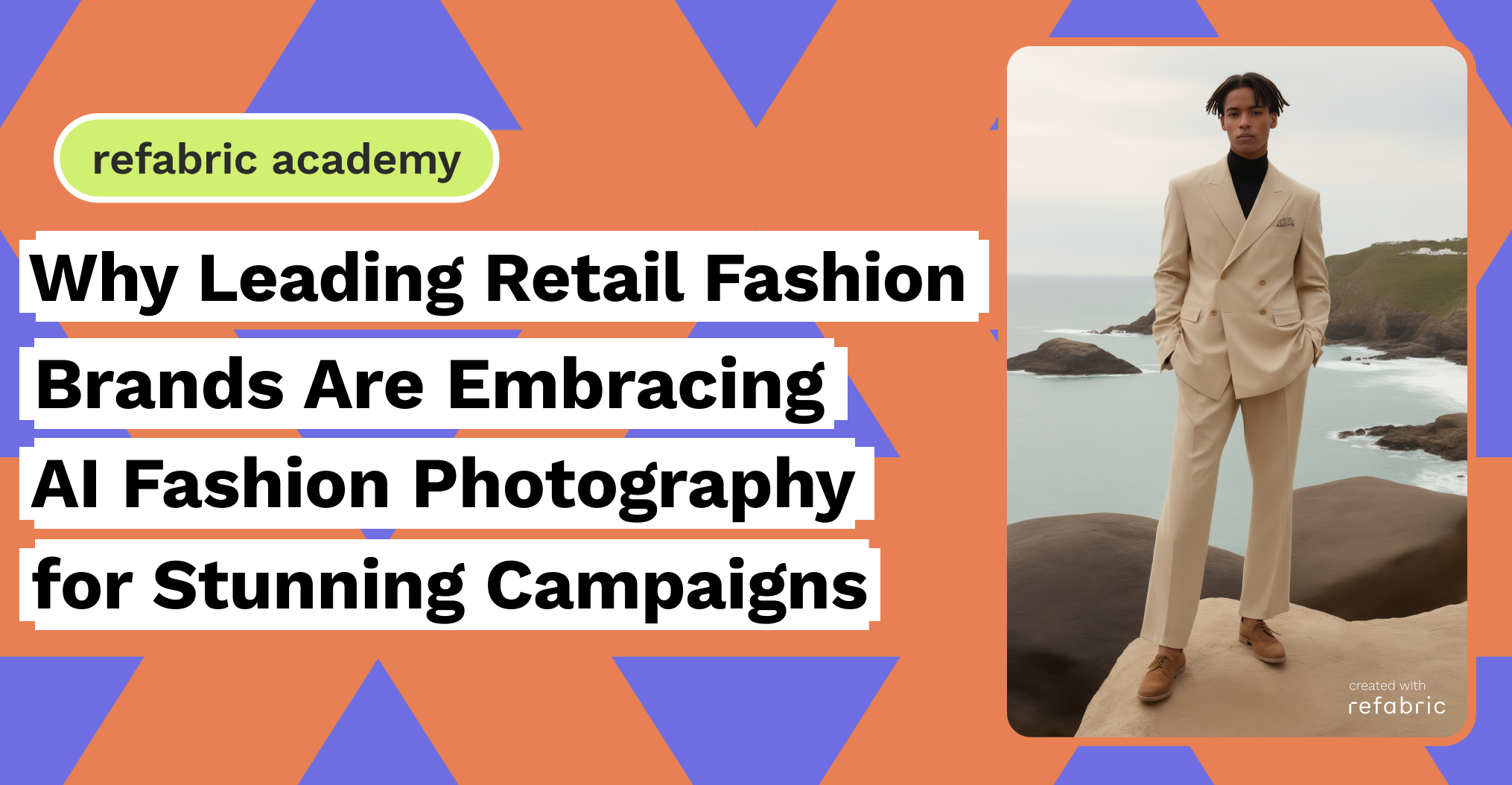The fashion industry, known for its relentless drive for innovation and creativity, is increasingly turning to AI fashion photography to redefine how campaigns are created and executed. Major retail fashion brands are investing heavily in AI fashion photography, leveraging the technology to enhance creativity, efficiency, and customer engagement. This article delves into the reasons behind this trend and provides examples of how brands are incorporating AI-generated imagery into their campaigns.
Enhancing Creativity and Experimentation with AI Fashion Photography
AI technology, particularly generative AI, offers unprecedented creative possibilities. Traditional photoshoots often involve significant time, resources, and logistics. In contrast, AI fashion photography can generate a multitude of visuals with varying styles, settings, and aesthetics, allowing brands to experiment more freely. This flexibility enables designers and marketers to explore bold and innovative concepts that might be impractical or too costly to produce through conventional means.
For instance, AI can create hyper-realistic images that blend elements of fantasy and reality, pushing the boundaries of visual storytelling. Brands can utilize these images to craft unique and compelling narratives that capture the imagination of their audience. AI fashion photography can also be tailored to specific themes, moods, or seasons, providing a dynamic and versatile tool for creative expression.
Cost and Time Efficiency
Producing a high-quality fashion campaign traditionally requires substantial financial investment and time. This includes hiring photographers, models, makeup artists, and stylists, as well as securing locations and managing post-production editing. AI fashion photography significantly reduces these costs and accelerates the production timeline.
By automating the image creation process, brands can quickly generate a vast array of visuals without the need for elaborate setups or large teams. This efficiency is particularly advantageous for fast fashion brands that need to keep up with rapidly changing trends and constantly refresh their collections. AI can swiftly produce content for marketing materials, social media, and e-commerce platforms, ensuring that brands remain agile and responsive to market demands.
Increasing Diversity and Representation
AI fashion photography allows for highly personalized and targeted marketing strategies. By analyzing customer data and preferences, AI can create customized visuals that resonate with specific demographics or individual consumers. This level of personalization enhances customer engagement and loyalty, as shoppers feel a deeper connection to the brand and its offerings.
For example, Levi’s is using AI-generated models to increase the diversity of models on their websites, improving the shopping experience and increasing conversions. AI can generate images featuring virtual models that resemble different body types, ethnicities, and styles, catering to a diverse audience. This inclusivity not only broadens the brand’s appeal but also reflects the values of representation and diversity that modern consumers increasingly prioritize.
Recently, Mango has been at the forefront of integrating AI into its marketing strategies. In a pioneering move, Mango utilized generative AI to create a campaign for a limited-edition collection for its teen line. The campaign featured AI-generated images that showcased the collection in imaginative and visually striking ways.
Mango’s approach involved training AI models on a diverse set of fashion images, enabling the technology to generate realistic and stylish visuals that aligned with the brand’s aesthetic. The AI-generated images were then seamlessly integrated into the campaign, complementing traditional photography and enhancing the overall visual appeal.
The use of generative AI allowed Mango to experiment with different styles and settings, creating a dynamic and engaging campaign that resonated with their target audience. By leveraging AI, Mango not only streamlined the production process but also demonstrated a commitment to innovation and sustainability.
To sum up, the adoption of AI fashion photography by major retail brands marks a significant shift in the industry. By enhancing creativity, improving efficiency, enabling personalization, and promoting sustainability, AI is transforming how fashion campaigns are conceived and executed. Examples like Mango’s AI-generated campaign for its teen line highlight the potential of this technology to revolutionize fashion marketing. As AI continues to evolve, it will undoubtedly play an increasingly central role in shaping the future of fashion photography and brand communication.
